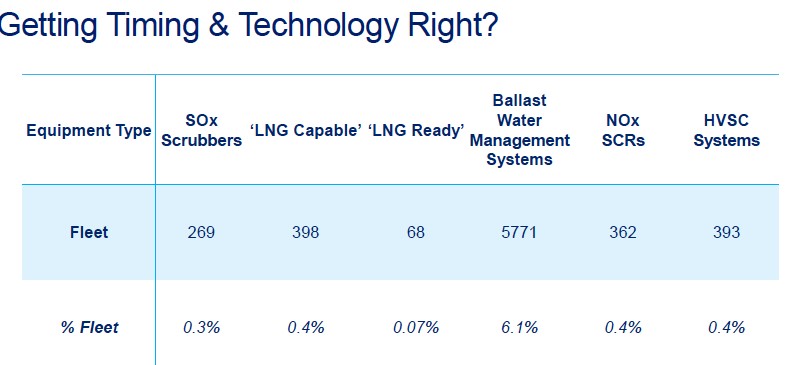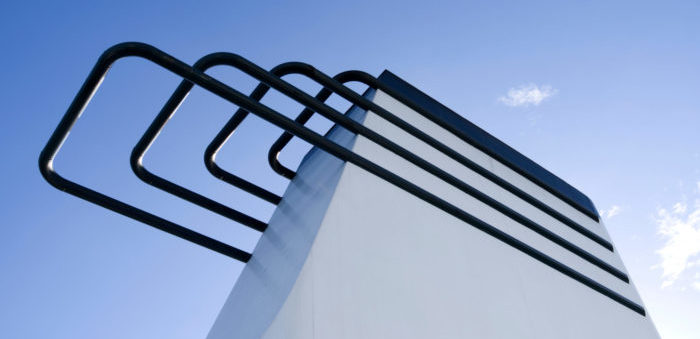Guido Van Meel, Secretary General of Euroshore International (a non-profit association of waste contractors specialised in ships’ waste) discusses the key challenges with respect to scrubbers taking into consideration a combination of factors that cannot be disregarded amid the legal background.
HFO – the king of the marine fuels
Heavy fuel oil (HFO) or residual oil is a by-product of crude oil refining process, and as such containing a lot of the contaminants removed from the lighter oils. That means that heavy metals, sulphur and other pollutants are present in heavy fuel oil. This makes it much cheaper than other lighter marine fuels and is the main reason it is used in marine engines. That is the reason that HFO is, up till now, the king of the marine fuels.
HFO is very viscous and requires to be kept at a temperature above pour point in bunkers and storage tanks to ensure efficient transfer and combustion. This is achieved by use of steam for the bunker and storage tanks and a series of heaters between the tanks and the engine fuel pumps and injectors to keep the oil between 40°C in the main bunkers and 120°C at the main engine injectors.
As we have seen, heavy fuel oil is a residue from the crude oil refining process and as such is the dregs of the process. It is used as a marine engine fuel because of its cheapness, but it does contain a lot of impurities. As a result, some parts of HFO will not suitable for burning in the engine and will be pumped to the sludge tank. The sludge production depends of course on the quality of the HFO that is produced in the refinery, which varies in function of the crude oil and the technology used. In literature some sources mention a sludge production between 1% and 2% of the fuel consumption. That means that a 14000TEU container vessel with an average daily consumption of 200t HFO will, on average, produce between 2 and 4ton sludge per 24h. On a voyage from Singapore to Western Europe this means that between 40 and 80m3 of sludge (waste oil) is generated.
The MARPOL 73-78 Convention requires that port reception facilities should be available in ports in order to accommodate the discharge of oily waste, garbage and other types of waste. In the main ports around the globe, waste handling has created flourishing businesses especially in the field of oily waste. Due to the increase of the oil price and the principles of circular economy, recycling of oily waste becomes an interesting business from collection, storage, pre-treatment and refining of oily waste.
Scrubbing exhaust gases
Due to the increasing impact of the exhaust gasses of ships on air quality, acid rain, particular matter in sensitive areas such as Northern Europe or areas with an existing air quality problem such as the North Sea countries, the East and West Coast of North America; the International Maritime Organisation (IMO) has created special areas. In these special areas ships are not allowed to burn high sulphur fuels.
In order to meet the new international requirements, set out for these so called ECA’s with a sulphur limit of 0,1% from 01.01.2015, ships are obliged to use distillates such as marine diesel oil (MDO) or marine gas oil (MGO). When we look at the market price of HFO and MDO we see that the price of MDO is almost 50% higher than the price of HFO. Taken into account that fuel cost represents almost 50% of the operational cost of shipping, shipowners are looking to cheaper alternatives.
One option could be the use of exhaust gas after treatment technology (scrubber), in particularly to wash out the pollutants from the exhaust gasses. Due to some uncertainties linked with the implementation of scrubber technology, the success of scrubbers is at this moment limited. However, with a performance of above 90% in washing out sulphur and some other pollutants, a scrubber can be a valid alternative especially when in 2020 the worldwide sulphur cap for seagoing vessels will be 0.5%S. HFO of 2,4% S in combination with a scrubber will easily meet the 0,5% sulphur requirements.
[smlsubform prepend=”GET THE SAFETY4SEA IN YOUR INBOX!” showname=false emailtxt=”” emailholder=”Enter your email address” showsubmit=true submittxt=”Submit” jsthanks=false thankyou=”Thank you for subscribing to our mailing list”]
Scrubbers can be divided in dry and wet scrubbers. Wet scrubbers use seawater or fresh water to wash out the pollutants from the exhaust gasses. That results in the discharge of heavy metals which are present in the HFO and some other pollutants. On top, the pH of the wash water is rather low 3-4. That means that the discharge of the wash water could be complicated in harbour areas, approach channels and close to sensitive areas.
Due to the fact that the scrubber technology is in full development and that scrubbers are tailor made taking into account the size of the vessel and the power of the engine, there are no series of “standard scrubbers” available. That means that test results on the wash waters can vary in function of the HFO that is used and the technology that is used by the manufacturer.
The duality of the system is that on the one hand IMO has approved the technology under certain circumstances, but that the standards for the quality of the wash waters is left to member state. Some of the EU Member states such as Sweden, Germany and Belgium have meanwhile forbidden the use of so-called “open loop” scrubbers in coastal waters and harbours. Other countries are carrying out an environmental impact study, that can limit the use of scrubbers. This vagueness in legislation limits the success of scrubbers.
The fact that some scrubber manufacturers claim a payback time of up to 2 years if the ship is sailing in an ECA area, will give an incentive for shipowners to install a scrubber if some of the threats can be overcome such as the wash water criteria.
Another uncertainty is the fact that the US has set its own standards for scrubbers. According to IMO a pH of 6,5 should be met 4m outside the hull, which mean that at the outlet the pH can be 3. In the US, the pH should be 6 at the outlet! This will result in the use of a neutraliser in order to increase the pH value.
At this moment, we see that the EU institutions are absent in the debate. Legal services is investigating in what way “open loop” scrubbers are compatible with the Water Frame Work Directive. Closed loop or hybrid systems use probably NaOH to neutralise the pH and capture the pollutants.
Scrubber sludge
When closed loop scrubbers use a medium such as sodium hydroxide, sometimes called caustic soda, then the system will generate a “sludge” which contains massive amounts of sulphur and other pollutants such as heavy metals. The waste can corrode metals, which will generate extra maintenance costs.
As a result, some speakers at the Marine Money Hong Kong Ship Finance Forum, early this year, concluded that there will be problems with the discharge of the by-products of the scrubber systems.
“It will become a nightmare” stated Precious Shipping Managing Director Khalid Hashim.
Indeed, scrubber sludge, is a waste which is difficult to handle. It has practically no caloric value, which makes incineration expensive; meaning that it should be brought to a dump for hazardous waste.
Probably, the combination of factors such as the uncertainty on the price gap between high and low sulphur fuels, the legal framework with differences between the US and EU and within the EU will play a role in the pick-up of this technology.
Only 2-3 years ago DNV predicted that scrubbers could be installed on 25-30% of the world fleet.

Today, the scrubber manufacturers said they have sold exhaust gas cleaning systems to be installed on 750 ships by the end of 2020. (ca 1% of the world fleet).
Conclusion
Taken into account the legal uncertainty about certain types of scrubbers especially open loop scrubbers, the price evolution of the different marine fuels (HFO, MDO and MGO) and the extra maintenance due to corrosion of piping, scrubbers haven’t come up to one’s expectations.
But, in the ECA’s with more strict sulphur requirements (0,1%) we can expect that they will be more successful. As the author doesn’t possess a crystal ball we can only conclude “with time comes counsel”.
By Guido Van Meel, Secretary General of Euroshore International
The views presented hereabove are only those of the author and not necessarily those of SAFETY4SEA and are for information sharing and discussion purposes only.
About Guido Van Meel
 Mr. Guido Van Meel is the Secretary general of Euroshore, an association of companies collecting ship generated waste and cargo residues, for the last 10 years. He is also a consultant at Port Expertise and CEO of ICT and Port Consultancy since 2012. Mr. Van Meel has also been a team leader of a ships waste project in Sweco Engineering Consultancy and Design. As an adviser in port of Antwerp from 1989 to 2012, he was also involved in many European and international developments.
Mr. Guido Van Meel is the Secretary general of Euroshore, an association of companies collecting ship generated waste and cargo residues, for the last 10 years. He is also a consultant at Port Expertise and CEO of ICT and Port Consultancy since 2012. Mr. Van Meel has also been a team leader of a ships waste project in Sweco Engineering Consultancy and Design. As an adviser in port of Antwerp from 1989 to 2012, he was also involved in many European and international developments.






























































